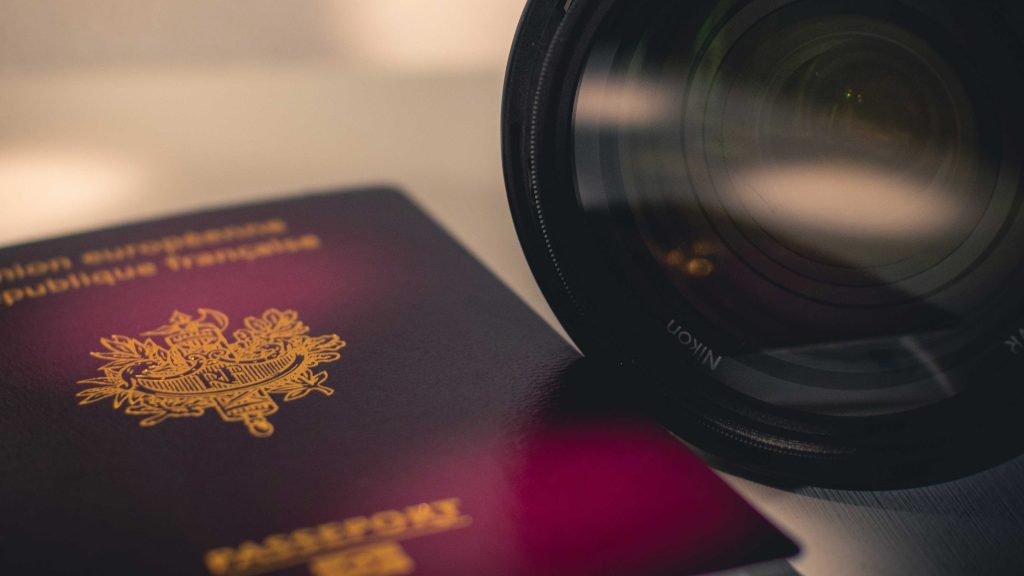If you are a Canadian citizen or permanent resident and you want to bring your spouse or common-law partner to live with you in Canada, you may be eligible to apply for spousal sponsorship. Spousal sponsorship is a type of family sponsorship program that allows you to sponsor your spouse or partner for permanent residence in Canada.
Table of Contents
In this guide, we will cover everything you need to know about spousal sponsorship in Canada, including:
What is spousal sponsorship and who can apply?

Spousal sponsorship is a process by which a Canadian citizen or permanent resident can sponsor their foreign spouse or partner to immigrate to Canada as a permanent resident. The sponsor must first apply to the government to be approved as a sponsor, followed by the foreign spouse or partner applying for permanent residence.
In order to be eligible, the sponsor must meet certain requirements such as being at least 18 years old, not being in default of any previous sponsorship obligations, and being able to provide financial support to the sponsored partner. The sponsored partner must also meet certain eligibility requirements such as being in a genuine relationship with the sponsor, passing medical and security checks, and not being inadmissible to Canada for any reason.
- What are the requirements and eligibility criteria for spousal sponsorship?
- What are the steps and documents involved in the spousal sponsorship process?
- How long does it take and how much does it cost to sponsor your spouse or partner?
- What are the benefits and responsibilities of being a sponsor and a sponsored person?
- What are the common mistakes and challenges that applicants face when applying for spousal sponsorship?
- How can you prepare for the spousal sponsorship interview and medical exam?
- How can you check the status of your spousal sponsorship application and what to do after approval?
By the end of this guide, you will have a clear understanding of how spousal sponsorship works in Canada and what you need to do to successfully sponsor your spouse or partner. Let’s get started!
What are the requirements and eligibility criteria for spousal sponsorship?

- To sponsor your spouse, partner or child, you must be a Canadian citizen, a permanent resident of Canada, or a person registered in Canada as an Indian under the Canadian Indian Act.
- You must be at least 18 years old and able to prove that you have enough income or savings to support the person you want to sponsor.
- You must not have a criminal record, a serious health problem, a debt to the government, or a previous sponsorship that failed or is still in progress.
- You must have a genuine relationship with your spouse or partner and not be married or in a partnership for immigration purposes only.
- Your spouse or partner must be at least 18 years old and legally married to you or in a common-law or conjugal relationship with you for at least one year.
- Your child must be under 22 years old and not married or in a common-law relationship, or be over 22 years old and dependent on you financially due to a physical or mental condition.
What are the steps and documents involved in the spousal sponsorship process?

- The first step is to check your eligibility and gather all the required documents for your application. You will need to fill out several forms, such as the sponsorship application form, the relationship questionnaire, the sponsorship agreement and undertaking, and the financial evaluation form. You will also need to provide proof of your identity, status, income, relationship, and marriage or partnership (if applicable).
- The second step is to pay the application fees online. You will need to pay the processing fee, the right of permanent residence fee, and the biometrics fee (if applicable). The total amount depends on whether you are sponsoring a spouse or partner only, or also a child. You will receive a receipt that you need to include with your application package.
- The third step is to submit your application package by mail to the appropriate address. You will need to include all the forms, documents, fees receipt, and photos that are required for your application. You will also need to include a document checklist to make sure you have everything you need. You should keep copies of everything you send for your records.
- The fourth step is to wait for your application to be processed. You will receive an acknowledgement of receipt letter that confirms your application has been received. You will also receive updates on your application status online. You may be asked to provide additional information or documents, such as police certificates, medical exams, or biometrics. You may also be invited for an interview if the immigration officer needs to verify your relationship or other aspects of your application.
- The fifth step is to receive a decision on your application. If your application is approved, you will receive a confirmation of permanent residence letter and a permanent resident visa (if applicable). If your application is refused, you will receive a refusal letter that explains why your application was rejected and whether you can appeal the decision.
How long does it take and how much does it cost to sponsor your spouse or partner?
- The processing time for spousal sponsorship applications varies depending on several factors, such as the country of origin of the person being sponsored, the type of relationship (spouse, partner, or child), and the completeness and accuracy of the application. According to Immigration, Refugees and Citizenship Canada (IRCC), the current average processing time for spousal sponsorship applications is 12 months. However, this is only an estimate and some applications may take longer or shorter than others.
- The cost of spousal sponsorship applications depends on the fees that are required for each application. According to IRCC, the current fees are as follows:
- Processing fee: $1,050 for spouse or partner; $150 for each dependent child
- Right of permanent residence fee: $500 for spouse or partner; $0 for each dependent child
- Biometrics fee: $85 for one person; $170 for two or more people
- Other fees: Depending on your situation, you may also need to pay for other services or documents, such as police certificates, medical exams, translations, courier services, etc.
What are the benefits and responsibilities of being a sponsor and a sponsored person?
- Some of the benefits of being a sponsor are: you can reunite with your spouse, partner or child in Canada; you can help them become permanent residents and eventually citizens; you can support their integration into Canadian society and culture.
- Some of the benefits of being a sponsored person are: you can live, work and study in Canada; you can access health care and social services; you can apply for Canadian citizenship after meeting the residency requirements; you can enjoy the rights and freedoms of a democratic country.
- Some of the responsibilities of being a sponsor are: you must sign an undertaking to provide for the basic needs of your sponsored person for a period of three or ten years, depending on their age and relationship to you; you must repay any social assistance or welfare benefits that your sponsored person receives during that period; you must inform Immigration, Refugees and Citizenship Canada (IRCC) of any changes in your address, marital status or financial situation.
- Some of the responsibilities of being a sponsored person are: you must be truthful and honest in your application and communication with IRCC; you must comply with the conditions of your permanent residence, such as not committing any serious crimes or engaging in fraud; you must respect Canadian laws and values; you must make efforts to learn English or French and contribute to your community.
What are the common mistakes and challenges that applicants face when applying for spousal sponsorship?
- Some of the common mistakes that applicants face when applying for spousal sponsorship are: using the wrong version of an IRCC application form; answering questions incorrectly or incompletely on the application forms; misunderstanding who the sponsor is and who the applicant is; getting IRCC jargon wrong; submitting insufficient or irrelevant documents to prove their relationship.
- Some of the common challenges that applicants face when applying for spousal sponsorship are: meeting the eligibility criteria for sponsorship, such as income, age and marital status; gathering enough evidence to demonstrate the genuineness and duration of their relationship; dealing with long processing times and delays due to COVID-19; facing possible refusal or appeal if their application is incomplete, inconsistent or fraudulent; coping with emotional stress and financial hardship during the separation from their spouse, partner or child.
How can you prepare for the spousal sponsorship interview and medical exam?
- To prepare for the spousal sponsorship interview, you should: review your application forms and documents carefully and make sure they are up to date; anticipate possible questions that IRCC may ask you about your relationship, such as how you met, when you got married, what your plans are for the future, etc.; practice answering these questions with your spouse, partner or child in advance; be honest, consistent and confident in your responses; dress appropriately and arrive on time for the interview; bring all the required documents and identification with you.
- To prepare for the spousal sponsorship medical exam, you should: find out which panel physician is authorized by IRCC to conduct the medical exam in your country or region; book an appointment with them as soon as possible after receiving your invitation letter from IRCC; follow their instructions on what to bring and what to expect during the exam; complete any tests or vaccinations that they may require; pay any fees that they may charge; obtain a copy of your medical report and receipt from them.
How can you check the status of your spousal sponsorship application and what to do after approval?
- To check the status of your spousal sponsorship application, you can: use IRCC’s online tool by entering your application number, country of birth and date of birth; sign up for email notifications from IRCC to receive updates on your application progress; contact IRCC by phone, email or web form if you have any questions or concerns about your application.
- After approval of your spousal sponsorship application, you should: wait for IRCC to send you a confirmation of permanent residence (COPR) letter and a permanent resident visa (if applicable); make sure that both documents are valid before travelling to Canada; inform IRCC if there are any changes in your situation, such as marriage, divorce, birth, death, etc.; prepare for your arrival in Canada by arranging your transportation, accommodation, finances, etc.; present your COPR letter and visa (if applicable) to a border services officer at a port of entry in Canada; receive your permanent resident card by mail within six weeks.
image source:
- Photo by Ksenia Makagonova on Unsplash
- Photo by Jérôme BEHUET on Unsplash
- Photo by Romain Dancre on Unsplash

0 Comments